“I Found 130 Letters by My Ancestor!” Why Use Google Books for Genealogy
Betty has at least 130 good reasons to use Google Books for genealogy! She used this powerful Google tool to find her ancestor’s name in a book–which led to a treasure trove of his original letters in an archive. Here’s what happened–and how to try this with your own family history research.
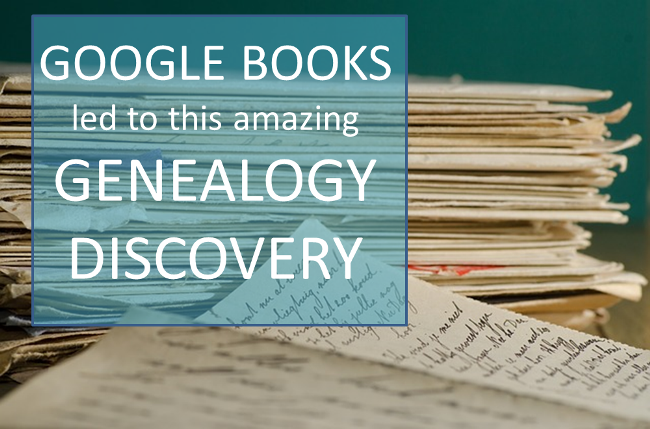
You’ve heard me say that Google Books is the tool I turn to every day. Now, you may be thinking, “But my ancestors wouldn’t be in history books!” Resist the temptation to make assumptions about sources, and about your ancestors. With over 25 million books, Google Books is more likely to have something pertinent to your genealogy research than you think. And as I often tell my audiences, those books can include source citations, providing a trail to even more treasures.
Why to Use Google Books for Genealogy: Success Story!
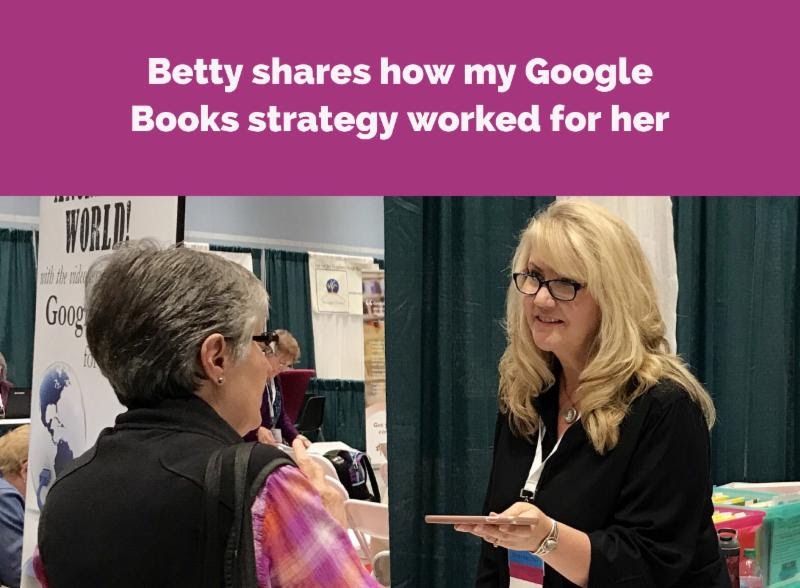
At the National Genealogical Society conference this past spring, Betty attended my class and then stopped by the Genealogy Gems booth to share her story. I recorded it, and here’s a transcription:
Betty: I was stuck on my Duncan Mackenzie ancestor, so I put his name in Google Books, because when you’re stuck, that’s what you do!
Lisa: Yes, I do!
Betty: So, up popped this history of Mississippi, it was sort of a specific history, and it said Duncan Mackenzie had written a letter to his brother-in-law in North Carolina from Covington County, Mississippi. And of course I already had my tax records and my census records that placed him in Covington County. This was in the 1840s. I thought, this just couldn’t be him! Why would any of my relatives be in a book? [Sound familiar?]
So, finally, weeks later, it occurred to me to go back and look at the footnotes in the book, and I found that the letters could be found in the Duncan McLarin papers at Duke University. So, I didn’t even think to even borrow the microfilm. I just told my husband, “next time you go East for work, we need to go by Duke University.” So I set up a time, and I went, and it WAS my great-great-grandfather who wrote those letters! I have now transcribed 130 letters from that collection. They let me scan them all, and I’ve been back again to scan the rest of the legal papers.
Lisa: So, an online search into Google Books not only help you find something online, but it led you to the offline gems!
Betty: And it just changed my life! Because I spend all my time on these letters. It’s distracted me from other lines! [LOL! I get that!]
How to Use Google Books for Genealogy
Are you ready to put Google Books to work in your own research and discover some genealogy gems of your own? Here, I re-create Betty’s search for you, so you can see how to get started:
1. Go to Google Books (books.google.com). Enter search terms that would pertain to your ancestor, like a name and a place.

2. Browse the search results. The first three that show up here all look promising. Click on the first one.
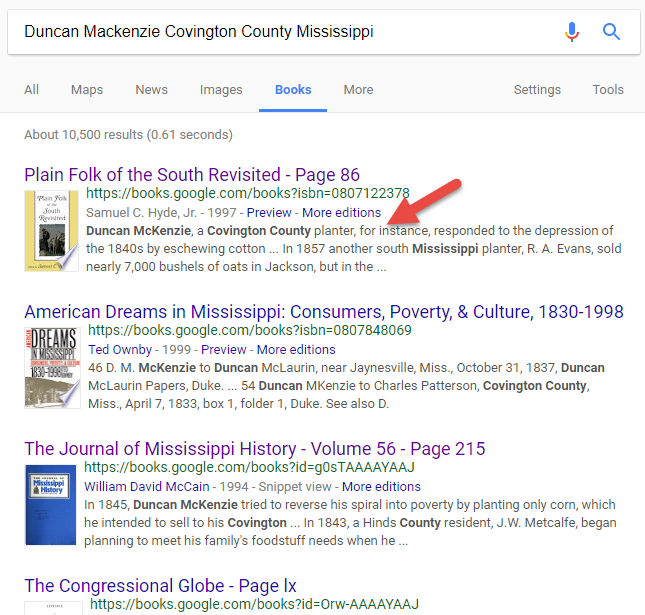
3. Review the text that comes up in the text screen. As you can see here, Duncan McKenzie of Covington County is mentioned–and the source note at the bottom of the page tells you that the original letter cited in the book is at Duke University.
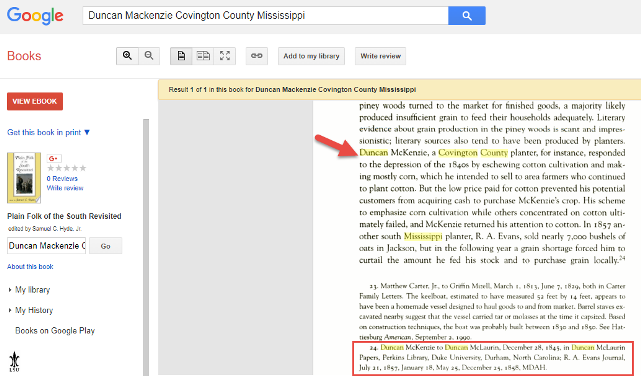
Learn More about Using Google Books for Genealogy
Learn more by watching my free Google Books video series at the Genealogy Gems YouTube Channel. Click the video below to watch the first one. (And be sure to subscribe while you’re there, because there are more videos to come!)
Then, watch the video below for a quick preview of my full one hour video class (and downloadable handout) called Google Books: The Tool You Need Every Day!, available to all Genealogy Gems Premium Members.
Google Searches for Genealogy Leads to an Opera’s Worth of Stories
Google searches for genealogy are a main focus of our Google Guru, Lisa Louise Cooke. Read this inspiring story of how one Genealogy Gems reader used Lisa’s Google search tips to find a trove of family stories worthy of an opera.

Opera house image courtesy of National Archives and Records Administration via Wikimedia Commons.
You never know when the amazing technology of the internet and Google will lead to a discovery that will open the doors on your family history. I recently received a letter from Genealogy Gems listener, Kristen. She shared the sad tale of her maternal grandmother’s history. Her grandmother had lost her mother before the age of two. Then, as an only child, her father abandoned her to be raised by a less-than-loving step mother. This young woman grew-up and had children of her own, but all she had in the way of a family history was the memory of her father’s name and a handful of unnamed photographs.

Merton E. Markert
Kristen went on to say, “She never really spoke of her sad childhood, save to say that the stepmother would tell her she had always been unwanted and that her mother was unloved and the marriage was forced.”
Among the handful of mystery photographs of her grandmother as a child, was a brief article from a newspaper. It was a lesson in manners titled Silence is Golden and it was written by Merton Markert, a student of the Modern Classics. A photo of a young woman was attached.
Using Clues for Google Searches for Genealogy
I took your advice and Googled Merton Markert Modern Classical Silence Golden. Up came the Lancaster High School Yearbook for 1905, featuring p. 41, the senior class portraits with their course study descriptions and a small personal quote for each. There was that exact photo of her, and the name Merton Markert, Modern Classical with the quote, “Life seems a jest of Fate’s contriving.”

Photo courtesy of Kristin Wat
The whole yearbook had been digitized by Mocavo, and it is the only yearbook for that high school in several years. My great-grandmother [Merton Markert], who had been buried and unspoken for a hundred years, had reached out to me. She wanted me to find her! Lisa, I cannot adequately describe the feelings I experienced at that moment of discovery. You understand how a moment like that feels, I’m sure. The chills, the tears…I felt like I was staring into her eyes, reaching through a century of silence, and finally able to acknowledge her sacrifice and legacy.
On the football team that year was my great-grandfather, and the whole book was ripe with clues that still hold nuanced significance.
From there, I was able to grow a tree on Ancestry.com and get the basics. But that does not tell you who the person is, the struggles, the character, the story. So taking your lead, and thinking like my brother the Sherriff Detective, I got creative. Using all kinds of searches and sniffing and turning over and under, I was able to uncover a veritable opera’s worth of stories within this one branch [of my family tree]. The cast of characters include: A Colonial founder, a secret bastard half-sister, a suicidal mother, a Klondike Gold Stampeder, alcoholics, a rejected Baptist Pastor, a homosexual affair-turned-murde
So thank you, my clever inspiration.
Lisa’s Response to Kristen with Additional Ideas
Thanks for sharing your fascinating story. I completely understand the emotions you felt the moment she was looking back at you on the screen. Those moments are precious and meant to be savored!Using search techniques from my book The Genealogist’s Google Toolbox, Second Edition, I also discovered this same yearbook on the robust and free Internet Archive website. Perhaps there is more there to be found. And I have an additional idea I thought you might like to try. It’s Ebay.
Ebay currently has a commencement program from 1902, old post cards of the school, and other yearbooks from Lancaster High School. Who knows what could be put up for auction in the future. You could sign up for a free Ebay account, run a search, and then click to Follow the search. You will then be alerted to future auctions that match your criteria. Happy hunting and thanks for being a Genealogy Gem!
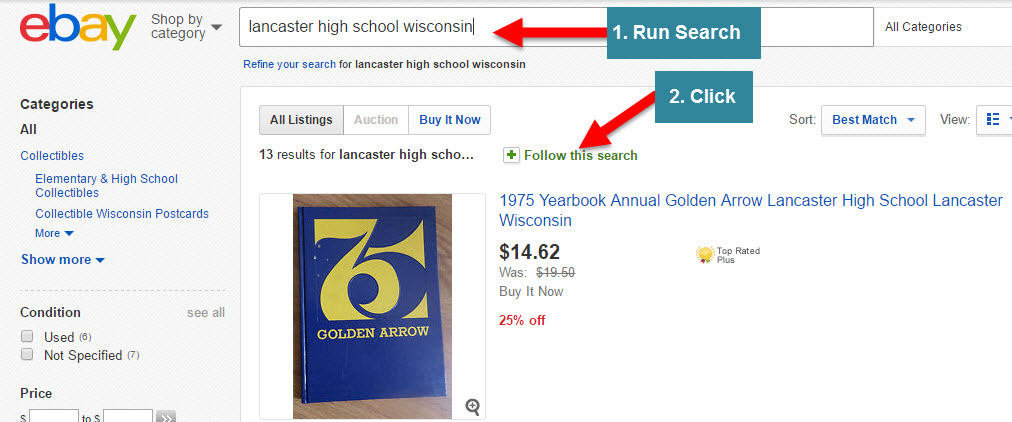
Genealogy Gems Premium Members can listen to Premium episode 16 which goes in depth into my Tips for Finding Family History Related Items on eBay.
More on Google Searches for Genealogy
Google is an effective and easy-to-use genealogy tool, you just need to know a few basics. Watch my YouTube video on speaking Google’s language and be sure to subscribe to our YouTube channel so you don’t miss any of our tech tips and more!
Open the Gift of New and Updated Genealogical Collections From Around the World
Happiest of holiday greetings to you! Celebrate with us as we share the gift of new and updated genealogical collections like censuses, histories, and school records from all around the world. This week: the United Kingdom, Australia, France, Peru, Ecuador, and the U.S.
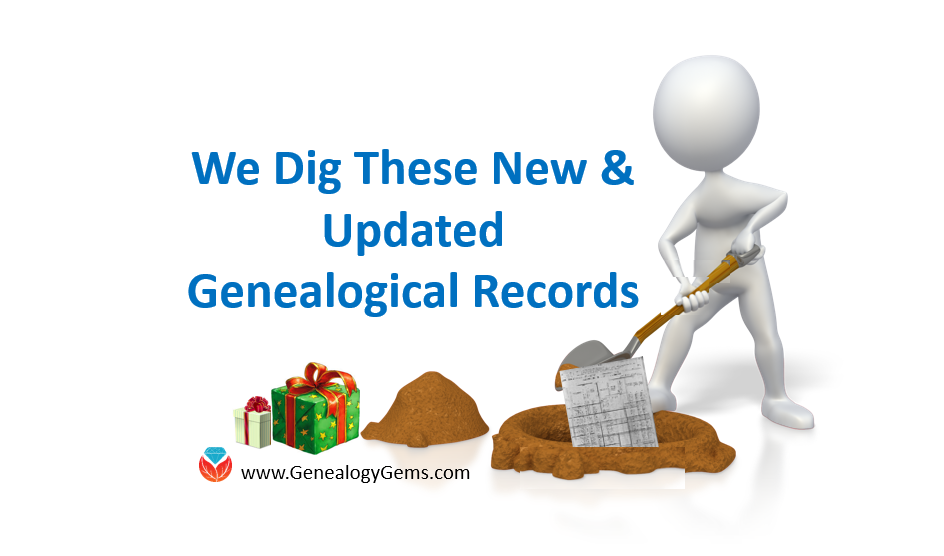
United Kingdom – Military
New records at Findmypast this week include the British Army discharges, 60th Foot 1854-1880. These British Army discharges will allow you to find your ancestor who served in the King’s Royal Rifle Corps. The records will contain service numbers, ranks, and the reason for discharge.
The 60th Regiment of Foot saw action in the Seven Years War, Napoleonic Wars, and Peninsular War. They have served in India, Burma, Afghanistan, China, and South Africa. The men found in these records most likely fought in The Indian Mutiny (1857-1859), in Canada during the Fenian raids (1866-1867), and The Zulu War (1879).
United Kingdom – Histories
Over 13,000 records have been added to Findmypast’s collection titled Britain, Histories & Reference Guides. The collection consists of 65 volumes on genealogy, heraldry, palaeography, geography, and more. The information found in these records may provide you with more insight into the lives of your ancestors and an better understanding of British life. For a more detailed description of the history publications and what each may offer, see the list at the bottom of the collection page.
England – Middlesex – Military
The Middlesex War Memorials at Findmypast contain over 21,000 transcripts of memorials from over 40 parishes across the English county of Middlesex. The new additions to this collection list the names of soldiers who died while on active service between 1845 and 1998.
Each record will include a transcript of the individual entry from the war memorial and a full transcript of all the names that appeared alongside your ancestor. Other information found on the records may include the conflict they served in, where and when they were killed, a brief description, and additional notes. Transcripts also include links from the West Middlesex Family History Society providing greater detail about the memorial such as the memorial’s location and explanations of abbreviations.
Australia – Queensland – Passports
Also at Findmypast this week, the Queensland Passports Index 1915-1925 of over 13,000 names is a helpful collection for those searching traveling ancestors! This collection is an index. The original registers were compiled by the Collector of Customs, Brisbane, and are currently held by the National Archives of Australia. Each record includes a transcript and may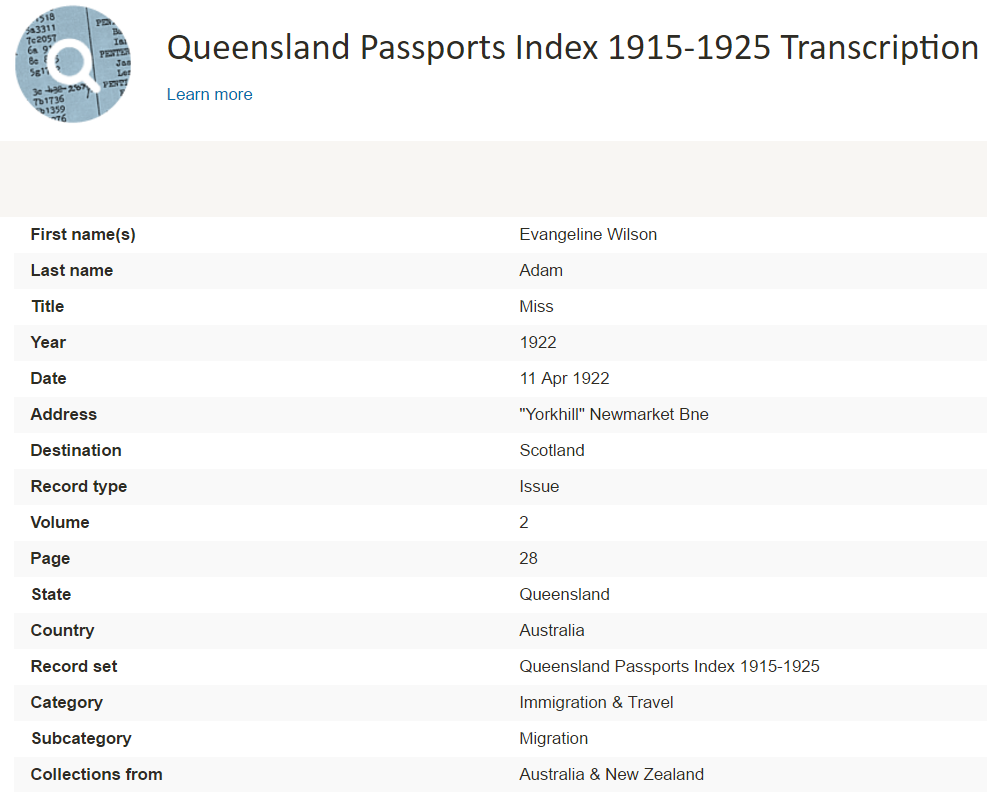 contain the following information:
contain the following information:
- Name
- Year the record was taken
- Address or residence
- Date they applied for or renewed a passport
- Their intended destination
Depending on the period covered, the registers themselves may include additional information such as passport numbers, warrant numbers, and remarks. Remarks may include details about soldiers returning home from the Great War.
Australia – New South Wales – Census
Explore the only surviving records from the New South Wales 1841 Census at Findmypast. Containing almost 11,000 names, this collection includes both fully searchable transcripts and scanned images of the original household returns, affidavit forms, and abstracts of returns.
Censuses like these often help piece together the family unit. Names, sex, ages, and birth places are common finds in this record set. Images of the original forms may also occasionally provide you with additional information such as:
- Religion
- Occupation
- Civil condition
The amount of information included will vary depending on the type of document.
France – Dordogne – Census
New and updated genealogical collections at FamilySearch this week include the France, Dordogne, Censuses, 1856 and 1876. These censuses may contain the following information:
- Surname
- Given name
- Age
- Occupation
- Nationality
- Position in the household
Each record contains a transcription and digital image. These census records are in French.
Peru – Civil Registration
Civil registration records are particularly helpful when church records are unavailable. FamilySearch has added new records to their collection titled Peru, La Libertad, Civil Registration, 1903-1998. Births, marriages, deaths, and other records are contained in this collection set. Some of these records have been indexed and are searchable. Additional images and indexed records will be published as they become available. These records are written in Spanish.
Ecuador – Church Records
FamilySearch collection Ecuador, Catholic Church Records, 1565-2011 contain some new Catholic Church records created by parishes and dioceses in Ecuador. These records include: baptisms, confirmations, marriages, pre-marriage investigations, deaths, and indexes. Some of the records have been indexed and are searchable. Remember, you can always browse the collection of nearly 1.5 million records. Church records are a great resource when civil records have been lost or damaged.
United States – Oklahoma – School Records
Oklahoma, School Records, 1895-1936 are now available to search on FamilySearch. This collection includes school records and annual censuses of pupils who attended schools in Woodward County, Oklahoma between 1895 and 1936. The records are generally arranged by years and then in numerical order by school district. Many of them list the name of pupil, pupil’s date of birth, and the names of parents or guardians.
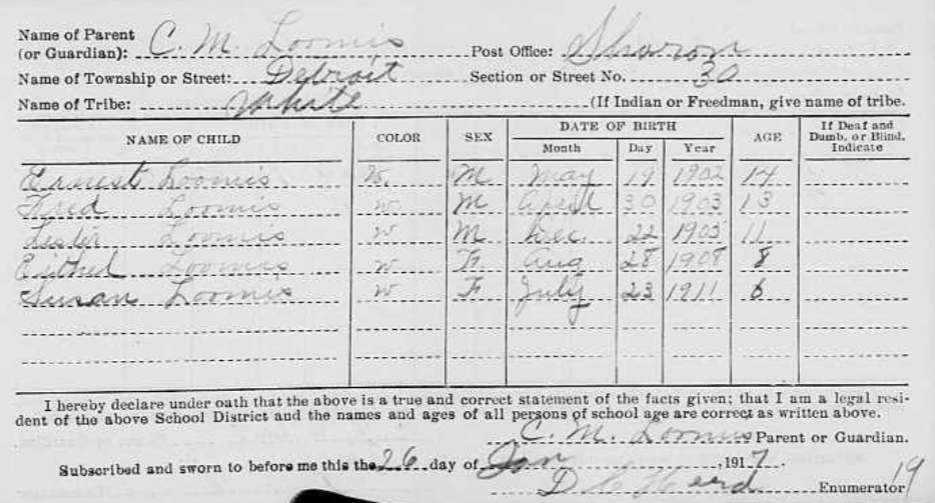
The records helped local governments determine funding needs for individual schools so the information is generally reliable. These records can also provide supporting evidence of parental and familial relationships.
Learn More About School Records for Genealogy
 From schools and orphanages to prisons, hospitals, asylums, workhouses, and more, there’s a good chance one or more of your ancestors might be found on record in one of the many types of institutions. In this Premium eLearning video, Institutional Records Research Methods, Lisa Louise Cooke presents methods for finding your ancestors in institutional records, from establishing a workflow and investigating clues found in the census and other records to resources and strategies for digging up the records. This 40-minute video includes a downloadable handout and is available right now to all Premium eLearning members. Click here to sign up!
From schools and orphanages to prisons, hospitals, asylums, workhouses, and more, there’s a good chance one or more of your ancestors might be found on record in one of the many types of institutions. In this Premium eLearning video, Institutional Records Research Methods, Lisa Louise Cooke presents methods for finding your ancestors in institutional records, from establishing a workflow and investigating clues found in the census and other records to resources and strategies for digging up the records. This 40-minute video includes a downloadable handout and is available right now to all Premium eLearning members. Click here to sign up!
Disclosure: This article contains affiliate links and Genealogy Gems will be compensated if you make a purchase after clicking on these links (at no additional cost to you). Thank you for supporting Genealogy Gems!
A Victorian Thanksgiving Turkey Recipe
 In honor of our Genealogy Gems Book Club featured author Sarah Chrisman, and her book This Victorian Life, we are publishing a number of Victorian inspired delectable recipes and other sumptuous ideas. This Victorian Thanksgiving turkey recipe celebrates how the holiday came into its own during the Victorian era, complete with a rich, moist roast turkey at the center of the table.
In honor of our Genealogy Gems Book Club featured author Sarah Chrisman, and her book This Victorian Life, we are publishing a number of Victorian inspired delectable recipes and other sumptuous ideas. This Victorian Thanksgiving turkey recipe celebrates how the holiday came into its own during the Victorian era, complete with a rich, moist roast turkey at the center of the table.
Thanksgiving became a national holiday in the U.S. in 1863, during the Civil War. Over the next few decades, festive cooks dressed up the Thanksgiving turkey with whatever flavors were available to them in season, such as chestnuts, sausage, dried cranberries or other fruits and even oysters!
This recipe for roast turkey with chestnut stuffing is edited slightly from the Fannie Farmer 1896 Cookbook, which you can read on Google Books (click here for more Google Books search tips). We’ve tweaked the wording slightly, separated the instructions into numbered steps and added the modern ingredient list to make it an easier read for the modern cook.
Victorian Thanksgiving Turkey with Chestnut Stuffing and Gravy
 Roast Turkey
Roast Turkey
Ingredients:
10-pound turkey
Salt
1/3 cup butter and 1/2 cup butter
1/4 cup flour
2 1/2 cups boiling water, divided
Parsley or celery tips (for garnish)
1. Dress, clean, stuff and truss a ten-pound turkey. (See quick how-to video tutorial below.) Place on its side on rack in a dripping-pan.
2. Rub entire surface with salt, and spread breast, legs, and wings with 1/3 cup butter, rubbed until creamy and mixed with flour.
3. Place in a hot oven, and when flour on turkey begins to brown, reduce heat, baste with fat in pan, and add boiling water.
4. Continue basting every 15 minutes until turkey is cooked, which will require about 3 hours. For basting, use 1/2 cup butter buy medication in turkey melted in 1/2 cup boiling water, and after this is used, baste with fat in pan.
5. During cooking turn turkey frequently, that it may brown evenly. If turkey is browning too fast, cover with buttered paper [aluminum foil] to prevent burning.
6. Remove strings and skewers before serving. Garnish with parsley or celery tips.
Chestnut Stuffing
 Ingredients:
Ingredients:
3 cups French chestnuts
1/2 cup butter
1 tsp salt
1/8 tsp pepper
1/4 cup cream
1 cup cracker crumbs
1. Shell and blanch chestnuts.
2. Cook in boiling salted water until soft.
3. Drain and mash, using a potato ricer [masher].
4. Add 1/2 the butter, salt, pepper and cream.
5. Melt remaining butter, mix with cracker crumbs, then combine mixtures.
Gravy
Ingredients:
Turkey drippings
6 Tbsp flour
3 cups turkey stock
salt and pepper to taste
optional: finely-chopped giblets or 3/4 cup cooked and mashed chestnuts
1. Pour off liquid in pan in which turkey has been roasted.
2. From liquid, skim off 6 Tbsp fat. Return to pan and brown with flour.
3. Gradually add stock, in which the giblets, neck and tips of wings have been cooked, or use liquor [liquid] left in pan.
4. Cook 5 minutes, season with salt and pepper; and strain.
5. For giblet gravy, add to the above giblets (heart, liver, and gizzard) finely chopped. For chestnut gravy, add chestnuts to 2 cups thin turkey gravy.
 Watch this blog (or follow us on the Genealogy Gems Facebook page, Pinterest or Instagram) in the coming weeks! Genealogy Gems Book Club featured author, Sarah Chrisman (This Victorian Life: Modern Adventures in 19th-Century Culture, Cooking, Fashion and Technologies) will be serving up a series of her favorite mouthwatering Victorian-era recipes in celebration of her coming Book Club interviews on the free Genealogy Gems Podcast and Genealogy Gems Premium Podcast in December.
Watch this blog (or follow us on the Genealogy Gems Facebook page, Pinterest or Instagram) in the coming weeks! Genealogy Gems Book Club featured author, Sarah Chrisman (This Victorian Life: Modern Adventures in 19th-Century Culture, Cooking, Fashion and Technologies) will be serving up a series of her favorite mouthwatering Victorian-era recipes in celebration of her coming Book Club interviews on the free Genealogy Gems Podcast and Genealogy Gems Premium Podcast in December.
